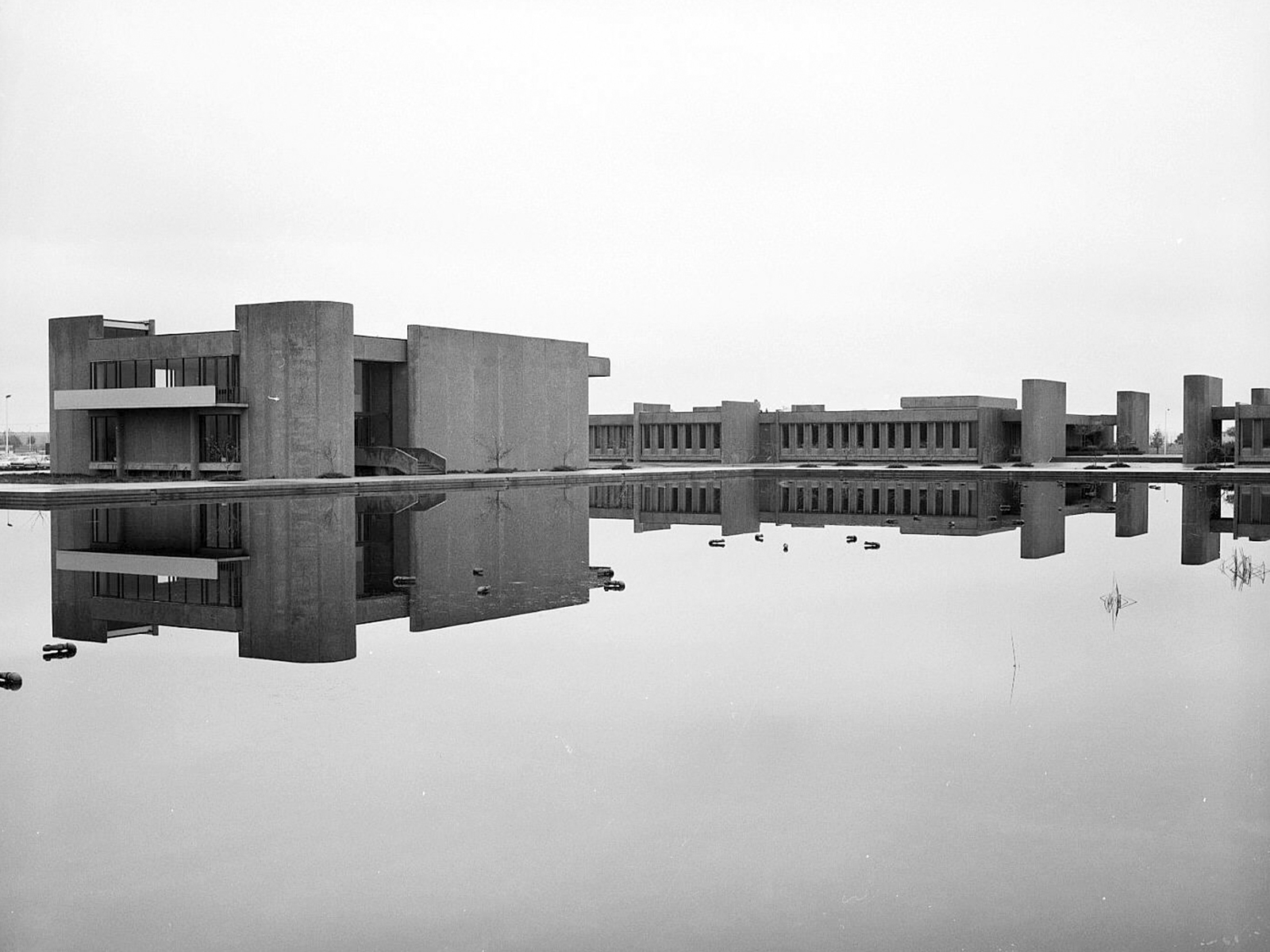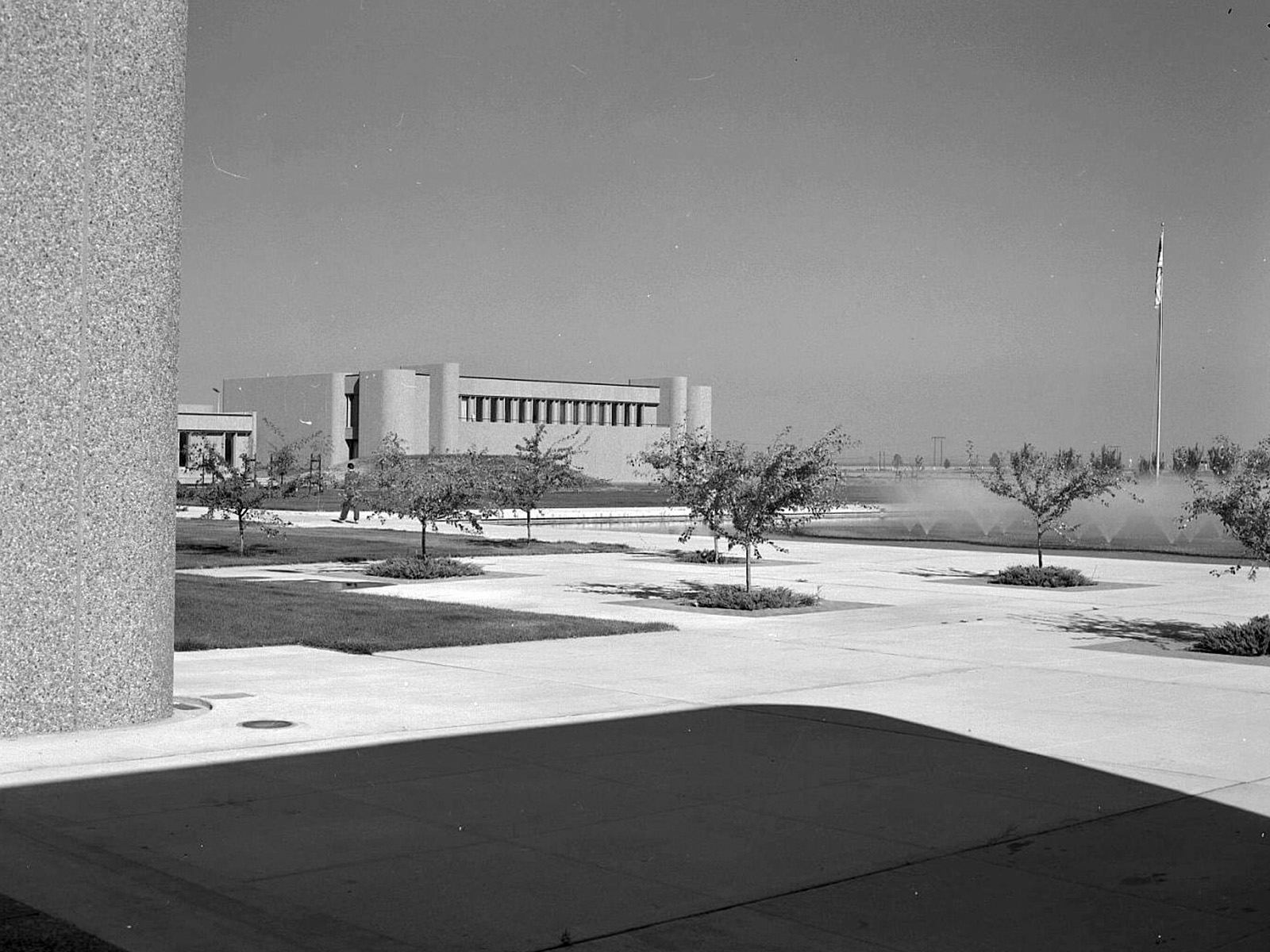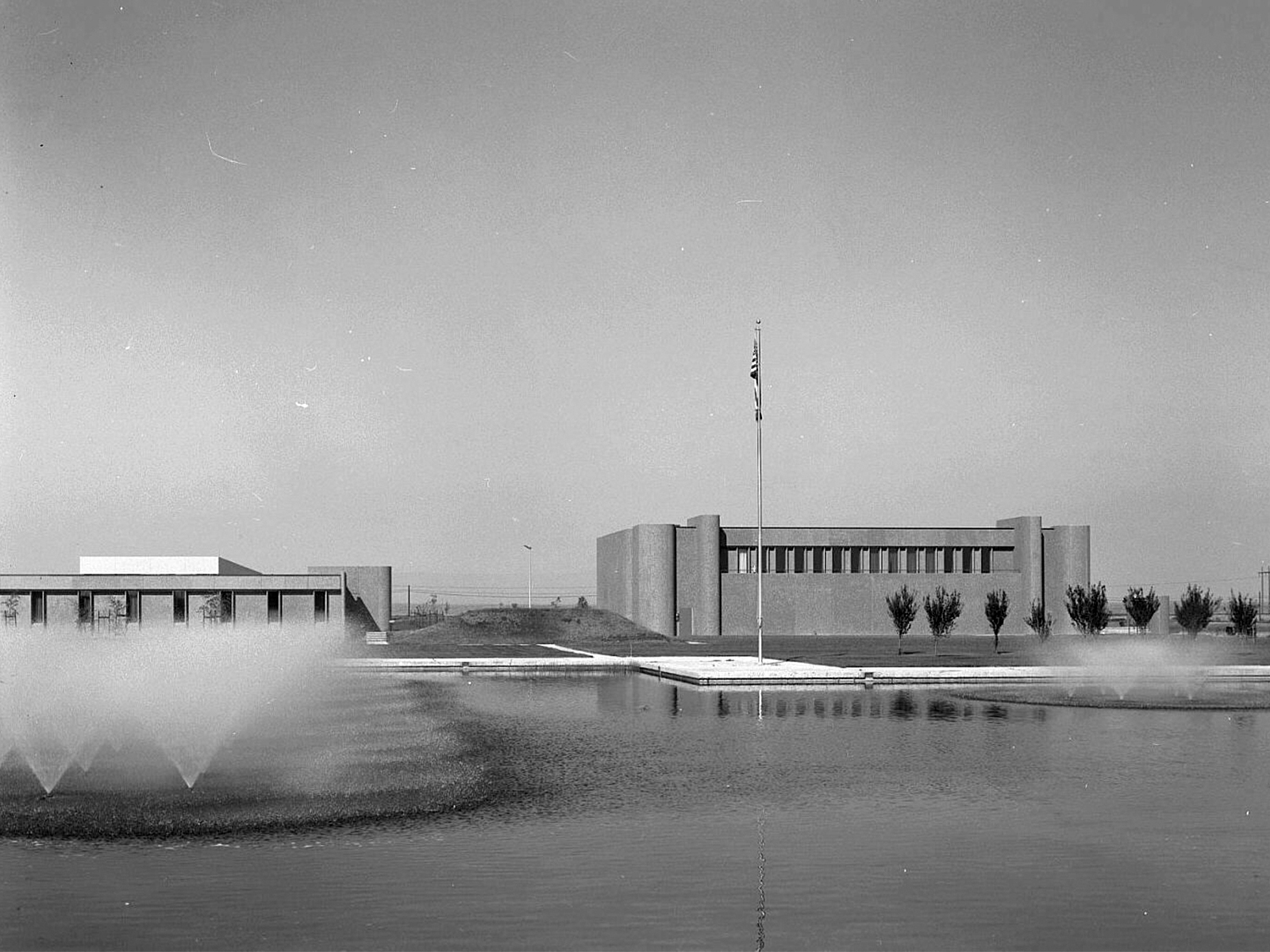Richland Campus
Historic District
Richland Campus
Historic District
Buildings eligible for
the National Register
of Historic Places
Buildings eligible for
the National Register
of Historic Places
In 1966, just as the first Pacific Northwest National Laboratory campus buildings were constructed, Section 106 of the National Historic Preservation Act (NHPA) was enacted. The law requires federal agencies to consider how their projects may affect historic properties. In 2017, as plans for future campus development were solidified, the Department of Energy's Pacific Northwest Site Office determined that each of the first six buildings built on the PNNL-Richland campus was eligible for listing on the National Register of Historic Places. The Washington State Historic Preservation Office concurred with the determination, thus creating the PNNL Richland campus historic district.
The Cold War years

The historic district buildings, built in the late 1960s and early 1970s, meet two criteria for listing on the National Register of Historic Places. The six buildings are eligible individually and collectively because of their association with Cold War history—specifically nuclear research and advancements in technology. Following World War II, the Atomic Energy Commission (AEC) was established to direct the peacetime development of atomic science and technology.
The onset of the Cold War shifted those plans, and the AEC mission evolved to include military-related programs and weaponry. When Battelle took over the Hanford laboratories—which would become PNNL—research was at the forefront of the non-wartime development of nuclear technology. PNNL’s research continued to have significant impacts on the U.S. nuclear power program.
Brutalist Modern architecture

The original buildings on the PNNL-Richland campus are also eligible for listing on the National Register of Historic Places because they embody a distinctive type of construction—the Brutalist Modern style—made popular by Charles Le Corbusier. Considered one of the pioneers of modern architecture, in the 1940s and 1950s, the designer experimented with concrete as a building material used in rough and sometimes crude forms. It was a modernist movement style that rejected classical historicism and was a reaction to the slick Miesian “glass curtain wall” office buildings. Brutalism embraced function over form, geometry, and large-scale concrete shapes and was commonly used in governmental, educational, and military buildings.

Each of the buildings within the Richland campus historic district is a slight variation of the Brutalist Modern style, with defining features such as heavy, horizontal lines. Buildings were clad with rough, sand-colored, pebble-aggregate precast concrete panels. These panels alternated with recessed, narrow windows to create a repetitive pattern of dark and light. Flat roofs with a wide fascia and recessed, inconspicuous entrances completed the style. Staff members came to call these buildings "the sandcastles.” To this day, the PNNL campus reflects the Brutalist ideals of its original buildings in its landscape components, as trees and plantings surround the core of the campus to present a unified whole.